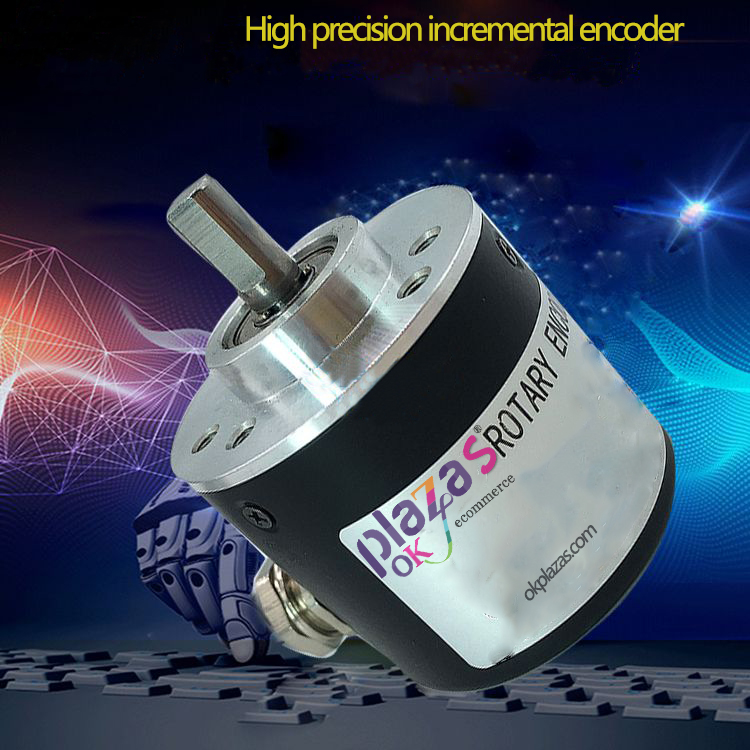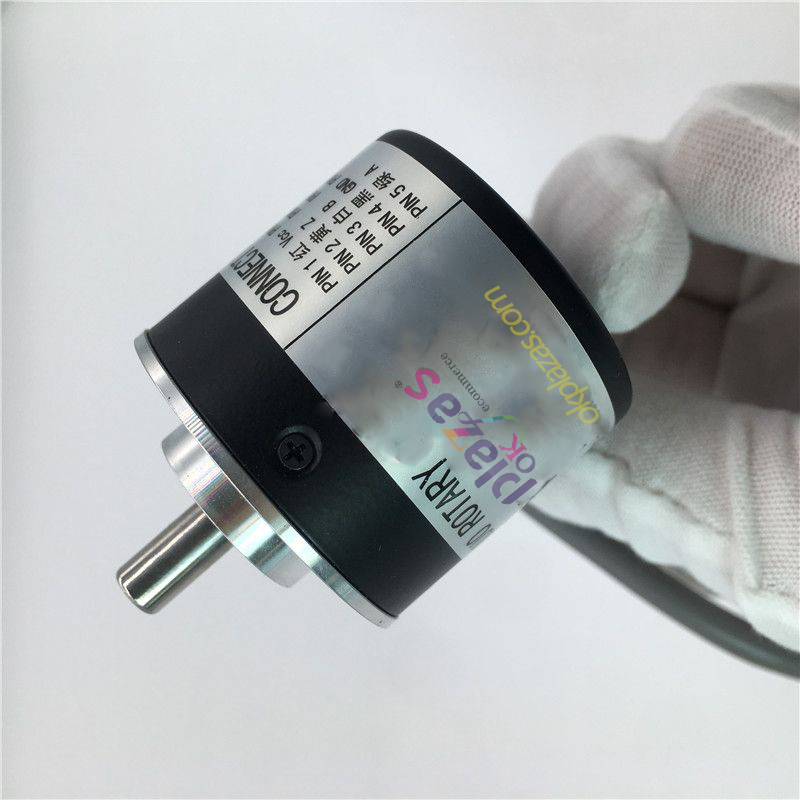What are the structural characteristics and common types of rotary encoders?
What are the structural characteristics and common types of rotary encoders?
What are the structural characteristics and common types of rotary encoders?
What are the structural characteristics and common types of rotary encoders?
Rotary encoder is a kind of sensor, which mainly plays a role in detecting the speed, position, angle, distance and other parameters of mechanical motion. The encoder as a signal detection method has been widely used in various industries. The working principle of the rotary encoder is as follows: when the rotary encoder shaft drives the grating disc to rotate, the light emitted by the light-emitting element is cut into intermittent light by the grating disc slit, and is received by the receiving element to generate an initial signal. After the signal is processed by the subsequent circuit, a pulse or code signal is output.
Rotary encoder is a speed and displacement sensor that integrates light, machine and electricity. It can convert mechanical quantities such as angular displacement and angular velocity of the output shaft into corresponding electrical pulses and output them in digital quantities. Rotary encoders have the advantages of small size, light weight, multiple types, complete functions, high frequency response, high resolution, small torque, low energy consumption, stable performance, high reliability, and long service life.

What are the structural characteristics and common types of rotary encoders? Incremental encoder
When the shaft of the incremental encoder rotates, there is a corresponding phase output. The judgment of the rotation direction and the increase or decrease of the number of pulses need to be realized with the help of a reverse judgment circuit and a counter. The starting point of counting can be set arbitrarily, which can realize unlimited accumulation and measurement of multiple cycles. The Z signal of one pulse per revolution can also be used as a reference mechanical zero position. When the pulse is fixed and the resolution needs to be improved, two signals a and B with a phase difference of 90 degrees can be used to double the original pulse number.
What are the structural characteristics and common types of rotary encoders? Absolute encoder
The shaft rotator code is 40; binary, BCD code, etc. one-to-one correspondence. According to the size change of the code, the positive and negative direction and displacement position can be identified, without the need for a direction judgment circuit. It has an absolute zero code. When the power is cut off or turned off, and the number is restarted to measure the quantity, the code of the power cut or stop position can still be read accurately, and the zero code can be accurately found. The measuring range of absolute encoders is generally 0 to 360 degrees, but special types of encoders can also achieve multi-turn measurement.

Sine wave encoder
What are the structural characteristics and common types of rotary encoders? The sine wave encoder is also an incremental encoder. The main difference is that the output signal is a sine wave analog signal, not a digital signal. Its appearance is mainly to meet the needs of electric field-as the feedback detection element of the motor. Compared with other systems, this encoder can be used when people need to improve dynamic characteristics.
In order to ensure good motor control performance, the feedback signal of the encoder must be able to provide a large number of pulse signals, especially when the speed is very low. The use of traditional incremental encoders to generate a large number of pulses is problematic in many ways. When the motor rotates at a high speed of 40; 6000rpm&41;, it is difficult to transmit and process digital signals. In this case, the bandwidth required to process the signal sent to the servo motor is 40; for example, the number of pulses per revolution of the encoder is 10000&41; it easily exceeds the MHz threshold; on the other hand, the use of analog signals is greatly reduced To solve the above problems, and can simulate a large number of pulse encoders. This is due to the interpolation of the sine and cosine signals, which provides a calculation method for the rotation angle. This method can obtain a high multiplication of the basic sine, for example, 1024 sine wave encoders per revolution can obtain more than 1,000,000 pulses. The bandwidth required to receive this signal is only slightly higher than 100kHz. The interpolation frequency multiplication needs to be completed by the secondary system.
The above is the editor of okplazas.com encoder coupling manufacturer: What are the structural features and common types of rotary encoders? I hope it will be helpful to you. Interested friends are welcome to exchange and learn together.





